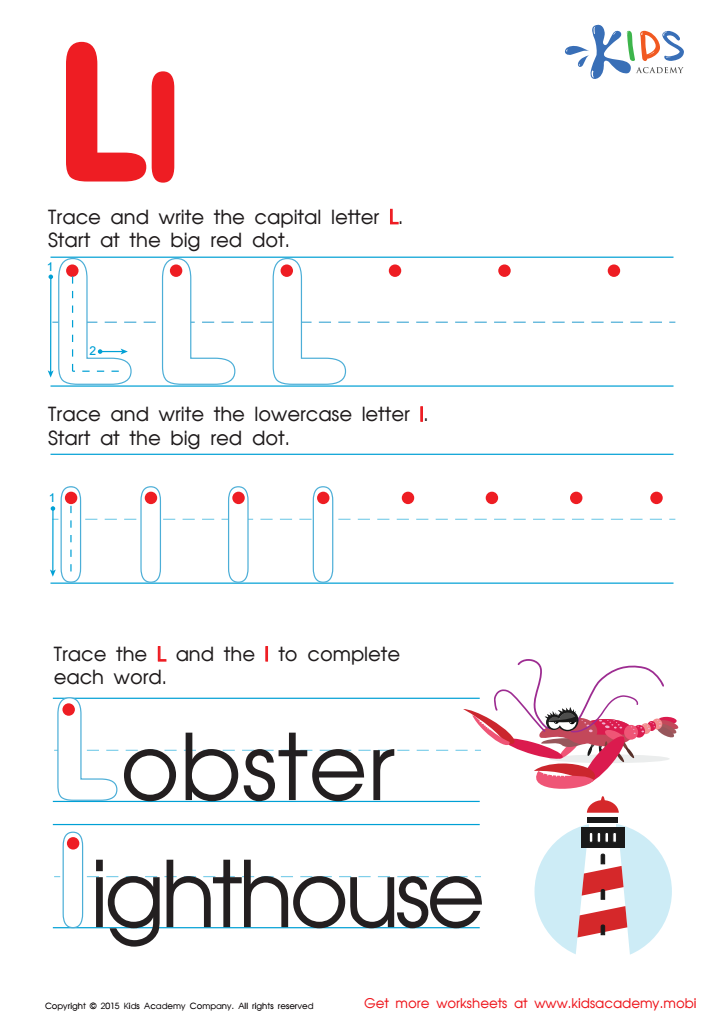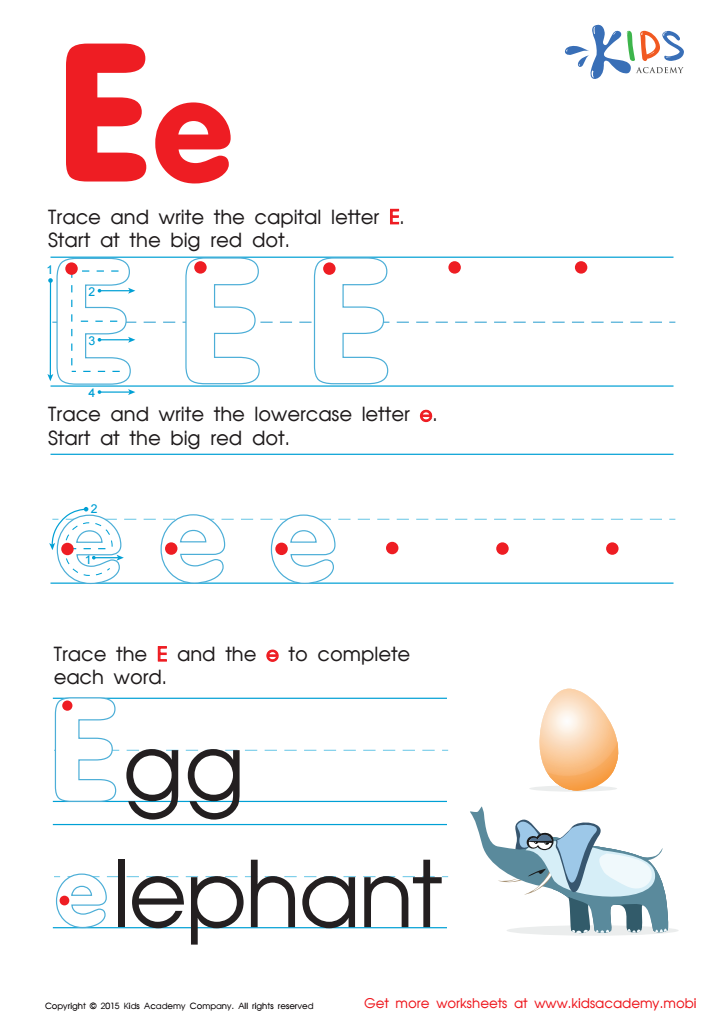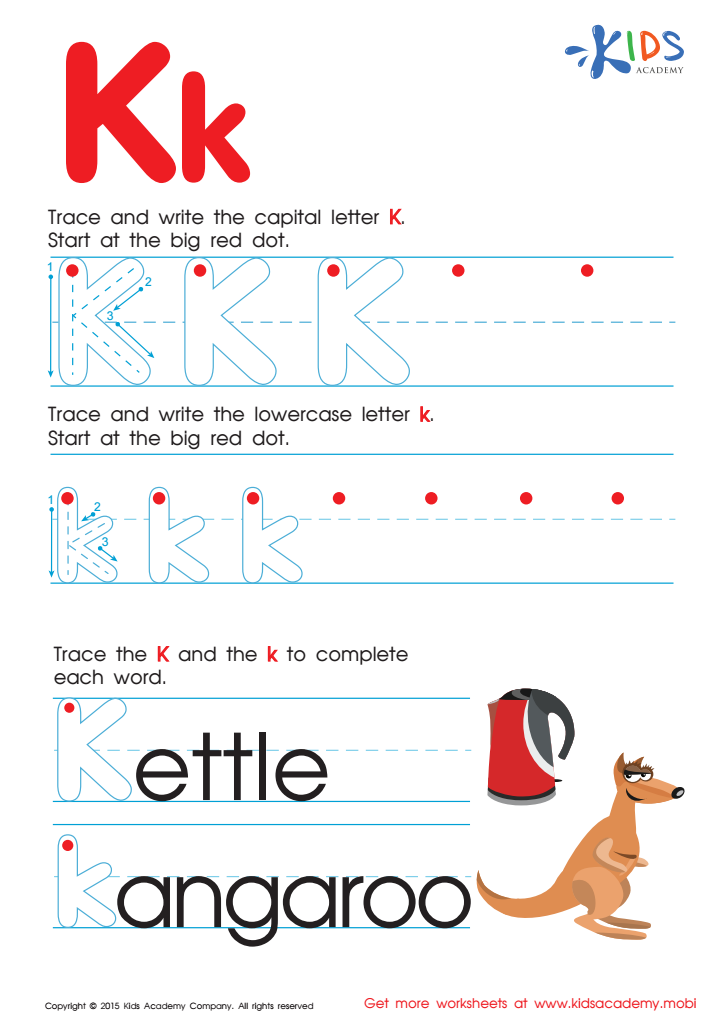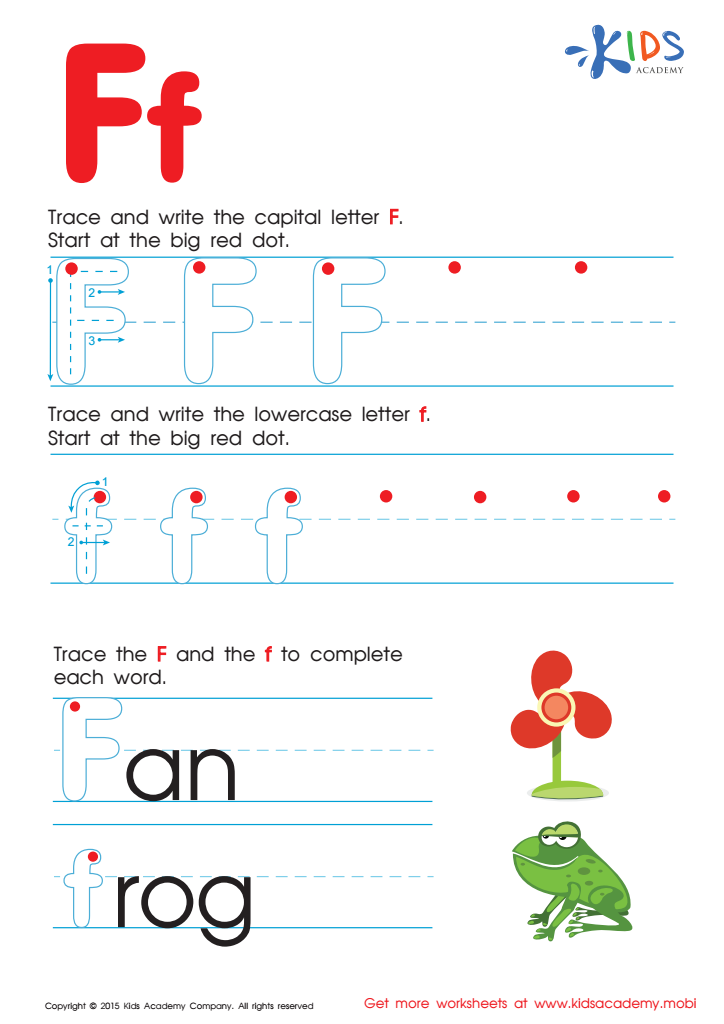Handwriting Skills Normal Tracing Letters Worksheets for Ages 7-8
5 filtered results
-
From - To
Enhance your child's handwriting skills with our engaging tracing letters worksheets, specifically designed for ages 7-8. These worksheets offer a fun and effective way to help children practice proper letter formation, spacing, and control. Each worksheet provides a structured layout that encourages precision, developing essential motor skills needed for fluent writing. Engaging illustrations and varied activities maintain interest, making learning enjoyable. Whether in the classroom or at home, these normal tracing letters worksheets will boost your child's confidence and proficiency in writing. Perfect for parents and educators looking to support early literacy development, these resources are easy to use and print.


Letter Q Tracing Page


Letter L Tracing Page


Letter E Tracing Page


Letter K Tracing Page


Letter F Tracing Page
Handwriting skills, particularly normal tracing letters for ages 7-8, are crucial for several reasons. At this developmental stage, children are refining both their fine motor skills and cognitive abilities, which directly impact their capacity to express thoughts and ideas through writing. Tracing letters provides an effective way to improve their letter formation, spacing, and overall handwriting neatness.
Moreover, mastering handwriting contributes to academic success. As children advance in their education, clear and legible handwriting is essential for completing assignments, taking notes, and participating in assessments. If handwriting skills are lacking, children might struggle to communicate their knowledge effectively, possibly affecting their confidence and performance in school.
Socially and emotionally, being able to write neatly can significantly enhance a child's self-esteem. When they produce work that looks good, they feel a sense of accomplishment and pride. Additionally, developing handwriting skills at this age lays the groundwork for a lifelong ability to express oneself through written communication.
Lastly, tracing is a fun and engaging activity that promotes learning through play, making the practice enjoyable rather than just a tedious task. Parents and teachers should encourage this skill to support children's holistic development, preparing them for future academic challenges.
 Assign to My Students
Assign to My Students















